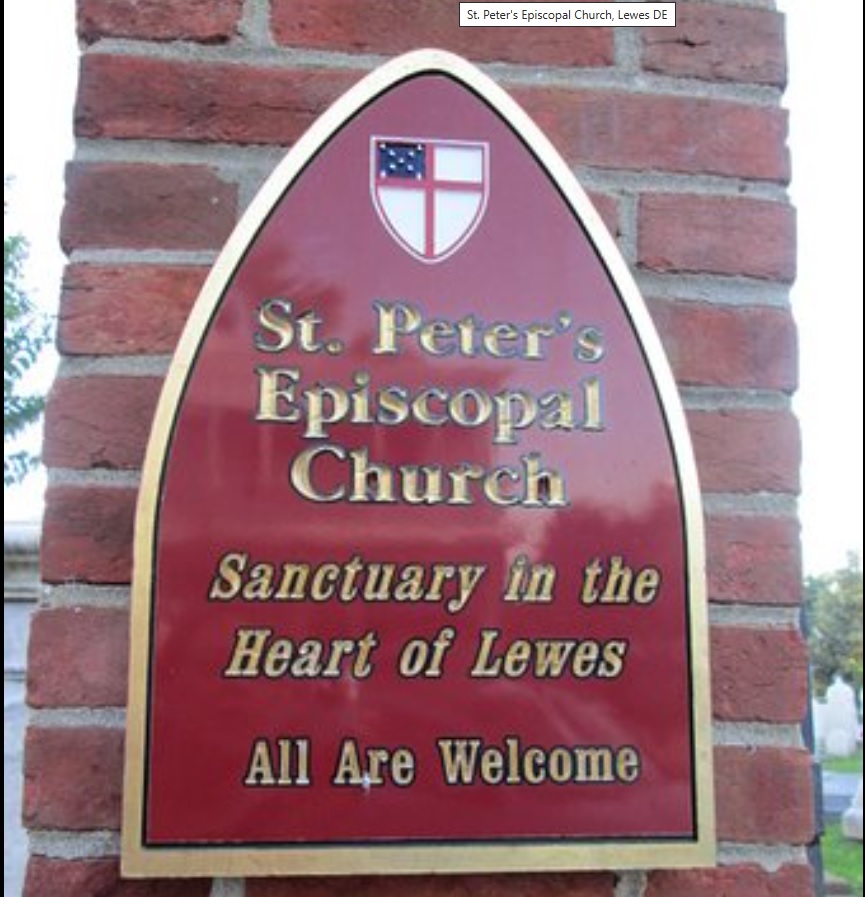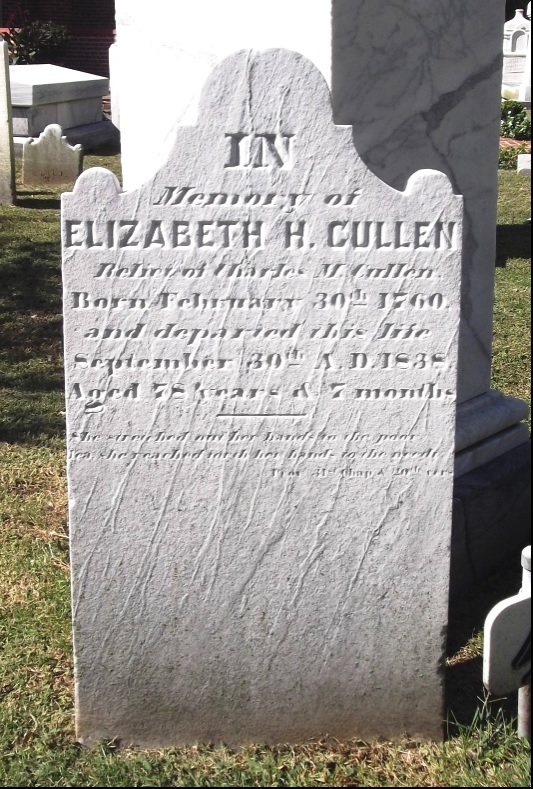Editor’s Staff
St. John’s Churchyard
Hampton, Virginia
For many years, the St. John’s Cemetery was the final resting place for many Hampton citizens, and as a result, there are many well-known names inscribed on tombstones located throughout the cemetery. This postcard, however, represents perhaps the most unusual tombstone, for if you look closely, you will note that Ann Jennings died on November 31, 1808. While the tombstone inscription is beginning to fade, the stone is still standing and a picture of it is included alongside the postcard.
Ann’s husband, William, is buried nearby, and his dates are 1758-1838.
Unfortunately, all the early church records were destroyed during the Civil War, so there is no further information on Ann or William.
– Charlie Edmonson
Charlie Edmonson submitted this article for the newsletter, and after I received it, the librarian and genealogist in me wanted to know more about William and Ann Jennings. A search on the Ancestry website and other sources yielded nothing more about the Jennings’s except more on the unusual fact of her death on “November 31, 1808.” Maybe the calendars were different in 1808—or maybe they just didn’t know what day it was!
I also love walking around old cemeteries, and I did find some interesting information about St. John’s Cemetery that I thought those of you who are not Hamptonians might be interested in knowing. The St. John’s cemetery was begun before the construction of the church on that site—the fourth church site in Hampton from (1761 to the present). During most of its history, at least at the beginning, it was the town cemetery and not reserved just for St. John’s members.
The earliest interment was in 1701. It was Captain Willis Wilson, whose family owned the fifty acres of land where the town of Hampton was established. His gravestone was destroyed during the Civil War, but the grave is near the east wall of the cemetery.
According to a history of St. John’s, How Firm a Foundation: the 400-year history of Hampton, Virginia’s St. John’s Episcopal Church by James Tormey, the cemetery reflects how gravestones have changed with the oldest ones giving long epitaphs and using Victorian period symbols.
One interesting grave he mentions is that of Captain Henry Mowat, a British sailor in Revolutionary times. Captain Mowat died of apoplexy on April 14, 1798, while cruising in the Chesapeake Bay. (Apoplexy was a common word at the time for sudden death.) He was buried at St. John’s. His tombstone says he was a British sailor but there is no mention of the fact that he commanded the naval fleet which bombarded and burned the town of Falmouth, Massachusetts (present day Portland, Maine) in 1775.
Another interesting stone is that of Doctor George Balfour who served during the Revolutionary War with General Anthony Wayne. General Wayne died in Dr. Balfour’s arms. Balfour’s tombstone, along with the 1830 date of his death, has an inscription that tells of his medical career as well as his connection to General Wayne. There is also an eight-line self-written epitaph.

Dr. George W. Semple was the surgeon-in-charge of General Hospital #21, a confederate prison hospital in Richmond, during the Civil War. He returned to Hampton after the war and served as president of the Virginia Medical Society in 1881. He is one of 147 Confederate veterans who are buried in the churchyard.

One of the more interesting people buried at St. John’s is Solomon Fosque – “Uncle Solomon.” He was born a slave on the eastern shore of Virginia. He came to Hampton and worked at St. John’s— as caretaker of the cemetery for the first 24 years and then as sexton of the church. He died in 1936 and according to his obituary in the Daily Press, the church was packed for his funeral. His friends served as pall bearers and the vestry members of the church served as “honorary” pall bearers. He was well-known for not only keeping the grounds of the cemetery, but he also knew its history and served as a guide. The crosses on the roof of the church building were donated by Solomon Fosque and are a memorial to him.

A Faithful Doorkeeper in the House of God St. John’s Church, Hampton, Va.
The Oldest Continuous Protestant Parish in America Founded in 1610.
– Sandy Cobb

This article, co-authored by Charlie Edmonson, Hampton Roads Postcard Club Vice-President and Sandy Cobb, the club’s newsletter editor,
recently appeared in THE POSTSCRIPT

the monthly newsletter of the
HAMPTON ROADS POSTCARD CLUB

An Encore . . . from your editor!
If wondering in cemeteries is something you like to do, find your way to the St. Peter’s Episcopal Church cemetery in Lewes, Delaware. The sign you see in the photo below is on the right-side of the red brick gateway.

Then, not far to the right, off the main walkway to the church door you will find the gravestone seen on the modern chrome card below.

I was once told – around 2012 – by a Lewes souvenir shop owner
that this was the most popular postcard he has ever sold in his store.


We have a beach cottage in Lewes for the past 49 years, and I have been to that cemetery. Being a port town since the 1600s, you see “lost at sea” on some of the grave markers.
Sweden added a February 30 in 1712 as a result of switching from the Julian to the Gregorian calendar and back again. In 1930 and 1931, the Soviet Union observed February 29 and 30 in an attempt to give each working month an identical number of days. Neither of these historical oddities explain Elizabeth Cullen’s literally etched in stone birthdate, however.
Wondering in cemeteries is something I like to do very much, however, I have come across very few cemetery postcards to add to my collection. I will certainly look harder now.
I just discovered this site. I’ve been a postcard enthusiast for years so this is quite a treasure for me
“Wondering” in cemeteries… or “wandering” in cemeteries? or maybe both?!!
This was a very interesting article, thank you! I am on the history and cemetery committee for Christ Church in Dover Delaware. Our oldest grave is from 1748. There are fascinating stories attached to so many people interred in our churchyard.